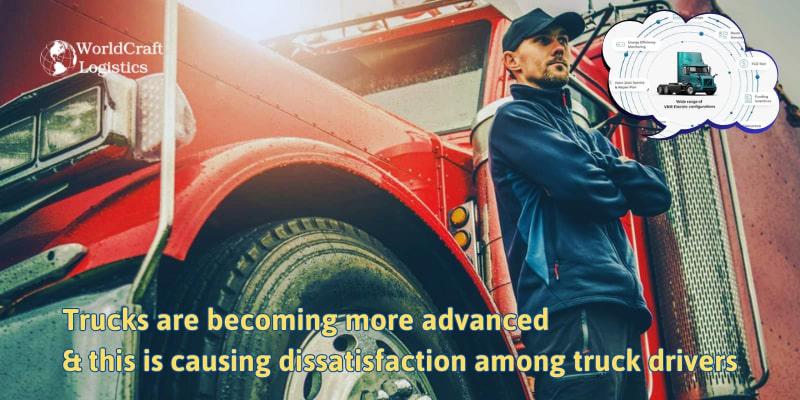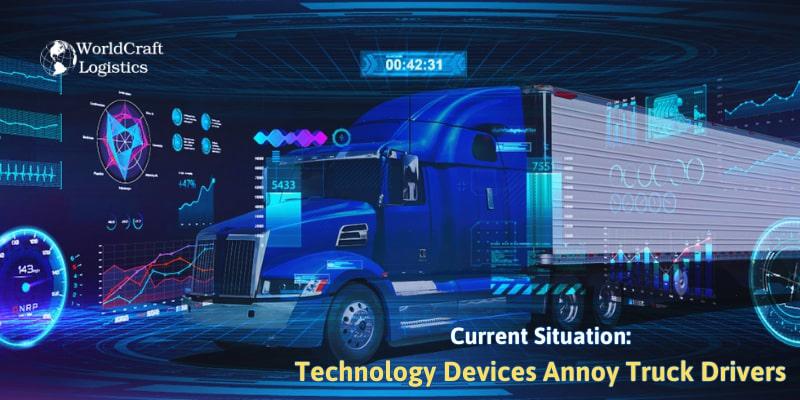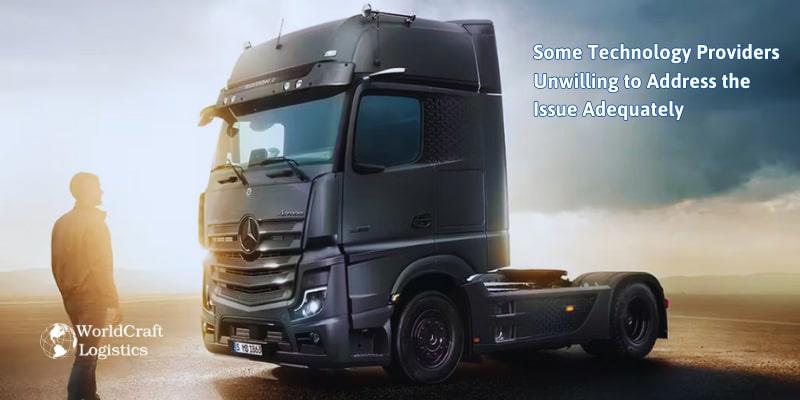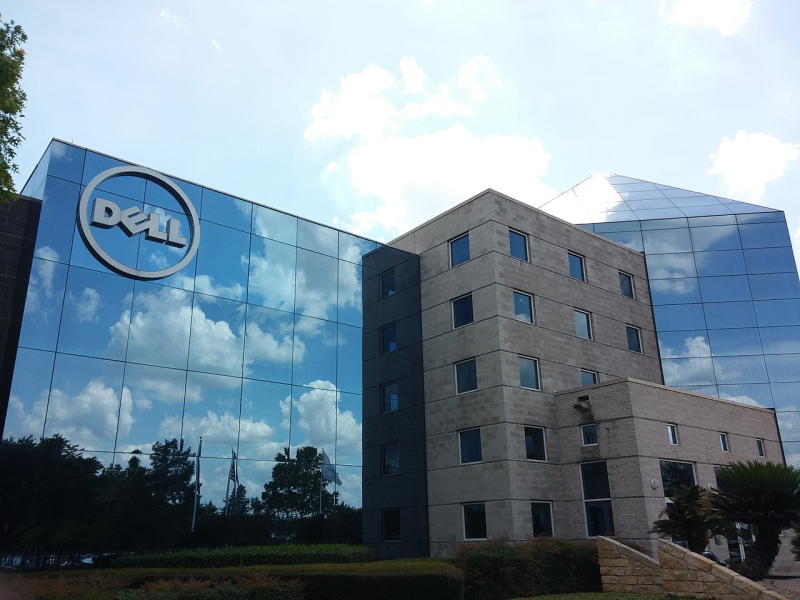
Starting June 1st, 2023 Our warehouse fee will be $0.65/cubic foot per month
In effort to lower the warehouse storage fee during inflation, we have went narrow aisle racking.This construction took us four months but the project is finally completed. With narrow aisle racking, we are able to drop storage by 24%.We as partners will go through this inflation together.
01/24/2024

In an era marked by technological leaps and innovations, the landscape of trucking is undergoing a profound transformation. The evolution of smart technology has found its way onto the highways, bringing forth a new era of intelligent trucks. However, amidst the beeping sensors and automated systems, a discordant note resonates among the truck drivers who navigate these modern marvels. The very intelligence designed to streamline and enhance the trucking experience is, ironically, leaving many drivers discontent. Let's Worldcraft Logistics delve into the fascinating yet complex intersection where the road meets technology, and where the aspirations of efficiency clash with the sentiments of those behind the wheel.

Elmer Bontrager, a truck driver based in Kentucky, is not bothered by the large and seemingly helpful technology in his truck. However, he acknowledges its limitations.
Bontrager's pickup truck aims to alert him whenever it seems like he is about to mess up. The issue is that the truck doesn't always get it right. For instance, the weigh station might have a stop sign, where the truck should only stop if the light is red; regardless, the truck believes it might want to stop. Or, his truck might mistake a tire tread or crack in the road for a lane marking or think that a narrow roadside trash bin in rural areas is a car he's about to hit. The high-tech truck provided by the owner cannot always distinguish between a threat and a regular incident.
"Technology doesn't always work as intended," Bontrager, living in a small town in southwestern Kentucky, wrote in a reflective email. "I think technology works best in an environment where everything is logical, this can happen in a computer program or even in a computer simulation. Unfortunately, in an environment operating in the real world, decisions and actions are made by humans, and humans often make irrational decisions and actions."
Suman Narayanan, Chief Technology Officer of Dailmer Trucks North America, stated that advanced driver assistance systems have become prevalent in trucks over the past 10 years. These technologies monitor whether drivers adhere to lane markings, maintain a proper following distance, and perform other crucial driving activities. Narayanan said these technologies have the "ability to reduce accidents," but they "cannot replace well-trained and attentive drivers."
These trucks do not take over the driving task, but these features can certainly make drivers lose focus. In response, more fleets are installing inward-facing cameras to monitor whether truck drivers are attentive. Motive, a provider of inward-facing cameras supported by AI, reported that fleets have reduced accidents by over 57% within four months of deploying Motive cameras, leading to a 30% reduction in accident-related costs.
Annette Sandberg, a traffic safety consultant and former administrator of the Federal Motor Carrier Safety Administration, noted, "You see a lot of fleets installing cameras. Part of it is, 'Listen, you still have to pay attention.' Suppose a car darts into the lane next to you, and suddenly it's right in front of you. From the fleet's perspective, while they expect the system to detect that, they also want to see that the driver is doing everything possible to avoid that. … They still expect the driver to understand and address that issue appropriately."
Some enhanced monitoring activities are federally mandated; since 2018, trucks must be equipped with Electronic Logging Devices (ELDs) to ensure driver compliance with hours-of-service regulations. Interestingly, since the introduction of this regulation, fatal accidents related to large trucks have actually increased. Speeding violations have also increased during that time. As trucks become more advanced, monitoring of drivers may increase, leading some drivers to question why this technology was introduced in the first place.
Truck driver Benjamin Reed, who drives for a family-owned fleet based in Wisconsin, wrote in an email: "About half of our fleet is new enough to have these 'safety' features. My experience (and that of my peers) is that these systems are quirky, unreliable, and unpredictable, regardless of who manufactures them or what type of vehicle they are installed on. I believe the recent push to replace skill with computers is a very bad idea."
Some news articles related to transport trucks:

There are five levels of automation. Most passenger drivers are familiar with Level 1, with features like adaptive cruise control, and perhaps Level 2, where the vehicle monitors lane-keeping.
In both commercial and passenger driving, Level 3 is challenging to widely implement. It is more expensive than less advanced systems but still requires drivers to be present.
Furthermore, it contributes significantly to an issue called "passive fatigue." Many studies have shown that when drivers don't actually need to do anything, they are more likely to disengage. In these cases, automated trucks can handle most of the driving tasks - specifically on highways at allowable speeds. However, humans need to quickly intervene in case of potential collisions.
Bontrager said, "The more technology assists in truck driving, the less the driver has to focus on driving, and therefore, I think it can really impact safety."
A study indicated that passenger drivers in simulated automated driving devices performed poorly in reacting quickly in collision scenarios. About 1/5 did nothing when their automated vehicle veered towards a closed highway exit. Another study showed that drivers started showing signs of passive fatigue on their faces after 15 to 35 minutes of simulated automated driving and reacted slower to takeover requests compared to drivers using traditional systems. Other studies have shown that driver attention decreases gradually when sitting behind the wheel of a semi-automated vehicle.
It's unclear whether this directly relates to the world of road transportation, where drivers certainly are not in a simulated device. Narayanan stated that appropriate training for truck drivers to use these new systems is crucial.

Passive fatigue is why some autonomous trucking startups are skipping lower-level automated driving. They are looking to jump straight into completely driverless solutions. Representatives from Gatik, Aurora and Kodiak Robotics all said they are only developing driverless technology, although safety-trained drivers are still behind the wheel of these trucks.
Don Burnette, founder and CEO of Kodiak, stated, "You need to take a lot of steps to ensure that the driver continues to be engaged. We want to completely avoid all that complexity."
Richard Steiner, vice president of government relations at Gatik, mentioned that regulatory agencies have shared their concerns about lower levels of automation.
"When you have vehicles related to partial automation, drivers are trained to understand what that partial automation really demands and whether it really makes sense," Steiner said. "Do they know that ultimately they are fully responsible and have to act as the controller? Do they understand the human factor and how that interaction actually takes place? Do they understand the role of automation in all of this?"
These startups plan to have truly driverless trucks regularly transporting goods in the coming years. As of now, neither company has been in operation for an extended period. Kodiak's trucks currently operate from Dallas to Houston, Oklahoma City, and Atlanta. Gatik's trucks operate within a range of up to 300 miles roundtrip.
According to Worldcraft Logistics, this is worrying news for 2.2 million truck drivers in the US. Now, however, many people are more concerned about being under excessive surveillance in their workspaces — the vans where they eat, sleep, work, etc. Some people have reported success in refusing to look inwards - the camera.
Reed, the truck driver based in Wisconsin, said, "We have cameras on the dashboard in our fleet but no inward-facing cameras. That specific topic only came up once at my current company, and the owner faced fierce opposition when merely mentioning them. The general consensus is the day they show up at our company is also the day we leave with colorful language suitable for a shuttle launch and a quantity suitable for a booster, spacecraft launch."
SEO
Digital Marketing/SEO Specialist
Simon Mang is an SEO and Digital Marketing expert at Wordcraft Logistics. With many years of experience in the field of digital marketing, he has shaped and built strategies to effectively promote Wordcraft Logistics' online presence. With a deep understanding of the logistics industry, I have shared more than 500 specialized articles on many different topics.

Hot News
08/05/2024

Hot News
02/23/2023

Hot News
02/23/2023

Hot News
02/06/2023
Hot News
02/07/2023